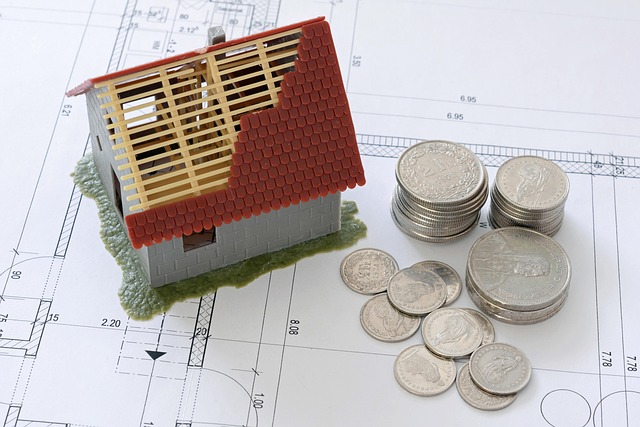Contractor financing fees play a critical yet often overlooked role in home improvement projects, covering various financial support costs. Understanding these fee structures is crucial for both contractors and homeowners. Homeowners benefit from informed decision-making and effective budgeting, while contractors can build trust by offering clear pricing. Key factors influencing financing charges include project size, materials costs, local market conditions, property type, and contractor overhead. Estimating costs accurately involves defining project scope, gathering quotes, factoring in overhead (15-20%), permit fees, inspection fees, and financing charges. Common pitfalls include underestimating total costs and assuming all financing options are equal; avoiding these requires careful budgeting, comparing offers from multiple sources, and securing cost-effective financing options.
Estimating contactor financing fees is a crucial step in any home improvement project. This article guides you through understanding and calculating these fees, which cover various aspects of financing home improvement ventures. We’ll explore key factors influencing fee calculation and provide a step-by-step guide to ensure accurate estimates. Additionally, we’ll highlight common mistakes to avoid, empowering you to make informed decisions regarding contractor financing for your next project.
- Understanding Contractor Financing Fees: What They Cover
- Factors Influencing Fee Calculation for Home Improvement Projects
- Estimating Costs: A Step-by-Step Guide
- Common Mistakes to Avoid When Budgeting for Financing Fees
Understanding Contractor Financing Fees: What They Cover

Contractor financing fees, often overlooked, are a crucial component in any home improvement project. These fees encompass various aspects of financial support provided to contractors by lenders or financial institutions. In the realm of home improvement financing for contractors, these charges cover the costs associated with funding construction projects. This includes initial loan processing fees, appraisal costs, and even administrative expenses incurred during the entire duration of the loan.
Understanding what these fees entail is essential for both contractors and homeowners. By breaking down these charges, contractors can offer more transparent pricing to their clients, fostering trust and ensuring a clear understanding of financial obligations. For homeowners, grasping these fee structures empowers them to make informed decisions regarding their home improvement projects, allowing them to budget effectively and avoid surprises during the financing process.
Factors Influencing Fee Calculation for Home Improvement Projects

When estimating contactor financing fees for home improvement projects, several factors come into play. The size and scope of the project are primary considerations; larger, more complex jobs typically carry higher financing charges due to increased risk and resource allocation. Materials costs also significantly impact fee calculation; expensive or specialty materials can drive up both financing and labor expenses.
Location plays a crucial role in home improvement financing for contractors as well. Local market conditions, including competition among contractors and area-specific material availability, influence pricing. Additionally, property type and age can affect fees, with older homes often requiring more specialized work and thus carrying higher financing costs. Other factors include the contractor’s overhead and profit margins, ensuring they can cover business expenses and maintain a sustainable operation.
Estimating Costs: A Step-by-Step Guide

Estimating costs is a crucial step in any home improvement project, especially when involving contractors and financing. It’s essential to have a clear understanding of the expenses involved to ensure your project stays on budget. Here’s a simple guide to help you navigate this process:
1. Identify Project Scope: Start by defining the scope of your home improvement project. This includes determining the type of work, materials required, and any specific features or customizations. For example, if it’s a kitchen remodel, list the new appliances, cabinets, countertops, and flooring you plan to install.
2. Gather Quotes: Reach out to multiple contractors in your area and request detailed quotes for the work. These quotes should include labor costs, material prices, and any applicable fees. When comparing quotes, remember that the lowest price isn’t always the best option; consider experience, reputation, and the quality of their work. For home improvement financing, contractors may offer packages with built-in finance options, so inquire about these as well.
3. Calculate Overhead and Profit: Contractors need to cover overhead costs and make a profit. Add 15-20% to the total quote to account for these expenses. This markup ensures they can sustain their business and remain competitive.
4. Factor in Permits and Inspections: Some home improvement projects require permits and inspections, which come with associated fees. Research these costs and add them to your estimate. These fees vary depending on your location and project type.
5. Consider Financing Fees: If you’re opting for home improvement financing for contractors, understand the terms and fees involved. This may include interest rates, origination fees, or payment processing charges. Compare different financing options to find the best deal for both you and the contractor.
Common Mistakes to Avoid When Budgeting for Financing Fees

When budgeting for financing fees in home improvement projects, contractors and homeowners alike often encounter common pitfalls that can lead to unexpected financial strains. One of the biggest mistakes is underestimating the total cost, which includes not just the financing fee itself but also any associated charges and potential interest accrual over time. Home improvement financing for contractors should be treated as a separate line item in the project budget, rather than an afterthought.
Another mistake to avoid is assuming that all financing options are created equal. Different lenders and financial institutions have varying terms, rates, and conditions. Failing to shop around for the best deal can result in higher fees and less favorable repayment terms. It’s crucial to compare offers from multiple sources, considering both traditional banks and alternative financing options specific to the contractor industry. This proactive approach ensures that you secure the most cost-effective and suitable financing for your home improvement project.
When budgeting for home improvement projects, understanding and accurately estimating contractor financing fees is crucial. By factoring in costs associated with loans, interest rates, processing fees, and potential late charges, you can avoid surprises and ensure a smooth financial journey. Remember that clear communication with your contractor regarding these fees is essential, allowing you to make informed decisions tailored to your project’s unique needs. With the right approach, you’ll be well on your way to securing the necessary funding for your dream home improvement without any budgetary setbacks.
